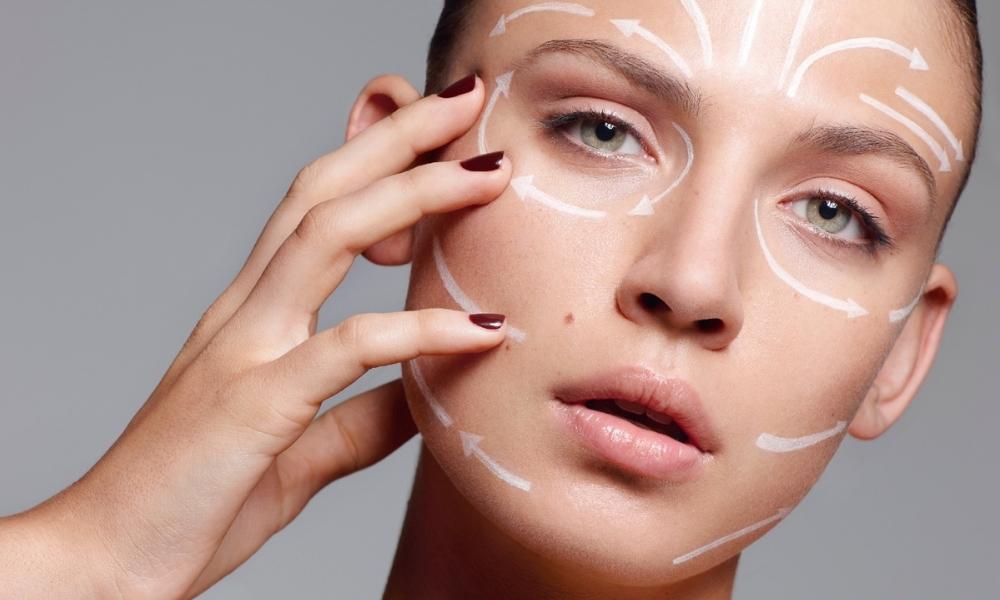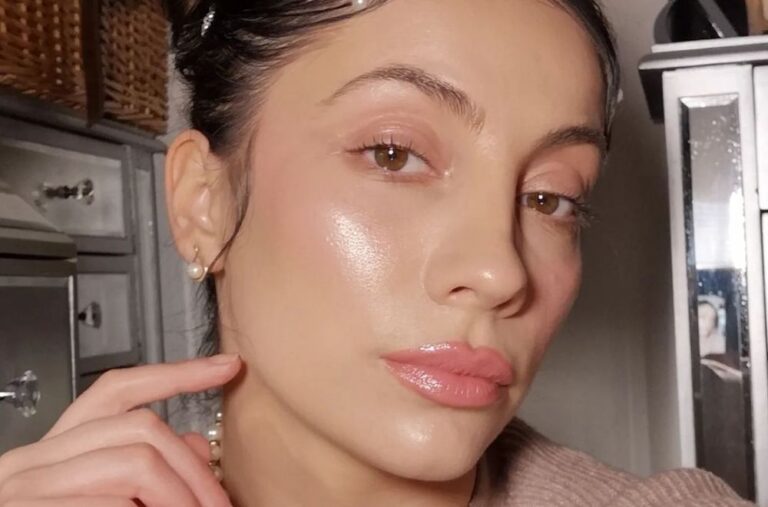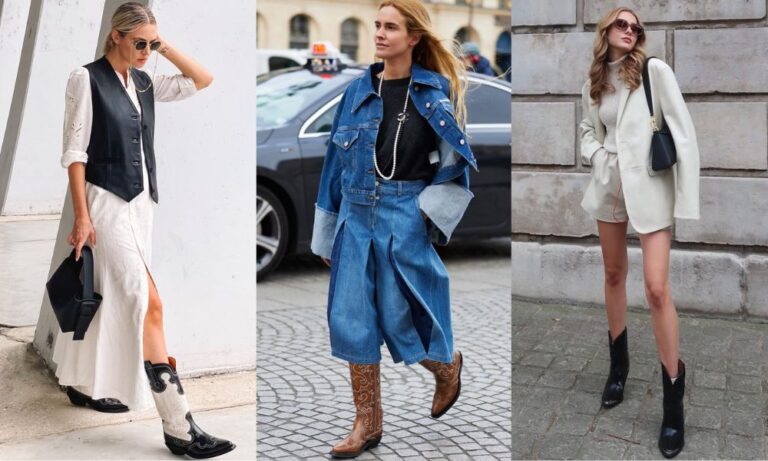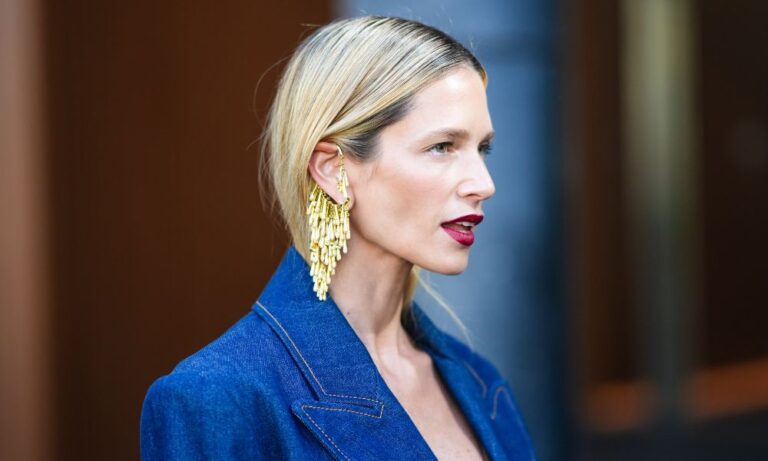As ever-smarter technology and advanced beauty tools and treatments continue to abound, it’s fair to get excited about the possibilities for a smoother, more taut and glowing appearance.
However, there’s another hugely popular movement taking the opposite approach, choosing a low-fi approach grounded in Eastern medicine to deliver lifting, sculpting and firming results.
Proponents of facial massage have always existed, and elements have long been included in professional facials. Yet recently there has been renewed interest in the potential of this approach. Increasing movement and pressure in the facial area with massage is said to increase blood flow, help drain the lymphatic system, sculpt and tone facial contours and release tension and stress.
Given we repeatedly make similar facial movements every day, it’s also said to help relax overactive muscles and fight frown lines and jaw clenching.
The good news is that facial massage and sculpting doesn’t have to be an either-or approach. It can be easily adopted as a complementary approach alongside your usual skincare routine at home, just as seeking out a dedicated treatment from a professional can provide unique benefits not achieved with your own fingertips.
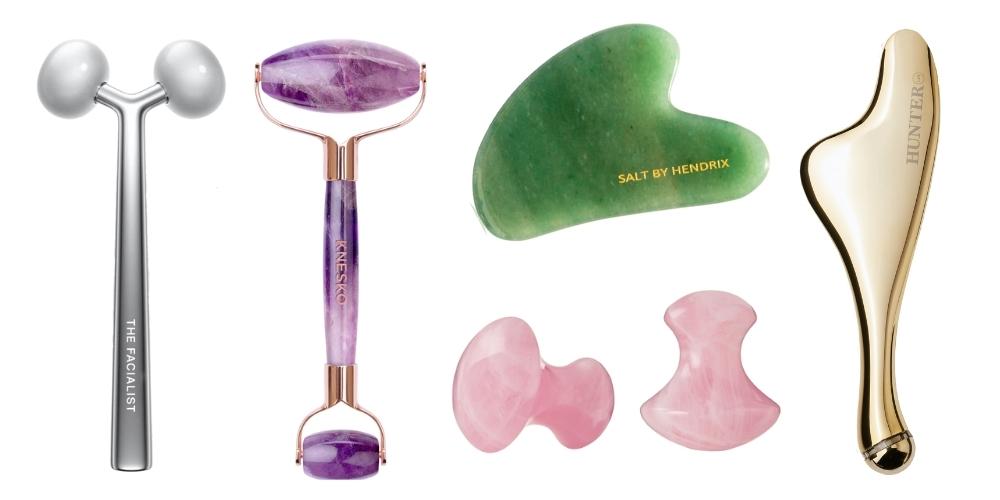
L-R: The Facialist The Sculptor; Knesko Skin Amethyst Gemstone Roller; Salt By Hendrix Jade Gua Sha; Angela Caglia Rosebud Eye Treatment Set; Hunter Lab AURA Facial Sculpting Tool.
What is Lymphatic drainage?
Lymphatic drainage has become part of the larger ‘wellness renaissance’ where people are increasingly seeing the value of more traditional, gentle and holistic self-care and beauty practices.
Treatments of the face and other parts of the body are generally undertaken for both health and aesthetic reasons. While techniques vary slightly, the appeal of facial massage is said to be the reinvigoration of facial circulation and moving sluggish lymph fluid around the face and away from areas where it can cause puffiness.
Lymph fluid is a key part of the lymphatic system, a network of tissues and organs that help rid the body of toxins, waste and other unwanted materials as well as helping the body fight infection.
“Lymphatic drainage helps to take waste and toxins away from the skin in order for them to be detoxified through the lymph nodes,’’ says Ashleigh Scott, founder of The Facialist, a skin treatment clinic that prioritises massage along with the use of advanced natural skincare.
“It is a form of massage that has considerable health benefits as well as creating visible change to the skin,” says Scott. “People suffering from congested skin or puffiness and fluid retention can benefit greatly from it.”
The skin expert says she’s always favoured massage-based facials over more popular machine-based treatments and is known for a treatment called the ‘Yoga Facial’.
“When you massage the skin you’re stimulating blood flow; thus bringing fresh oxygen and nutrients to the surface of the skin and taking waste away. This gives the skin a super clear and vibrant complexion.”
While Scott works to manipulate the muscles in the face with facial massage, the Yoga Facial also provides a type of facial ‘resistance training.’
“Much like you work out the muscles in the body to keep them firm and toned, we can also do the same with the muscles in the face, especially around the jawline, cheekbones and eye area. As you age these areas typically lose firmness; facial massage can help to keep them lifted and toned.”
What is intraoral facial massage?
Proponents of trending intraoral or buccal massage say it’s worth getting over the slightly uncomfortable aspects of the facial approach in order to reap its benefits.
The technique involves massaging muscles from within the mouth and deep inside the cheek and jaw area to release tension, improve circulation, and, of course, promote youthful-looking skin.
Therapists put their (gloved) fingers into your mouth, manipulating and releasing tension and massaging muscles and connective tissue inside your cheeks.
A celebrity fave, the approach gives a plump and glowing look and is said to be one of the ways the A-List achieve sculpted cheekbones for the red carpet. The reputation comes in part from London facialist Nichola Joss, who offers a version called The Inner Facial and whose client list has included Meghan Markle, Margot Robbie and Kate Moss.
Sydney facialist and creator of similar The Intrinsic Facial, Isabella Loneragan, says though they are convincing, it isn’t just the visible results that drew her to offer the approach. She combines buccal massage with more traditional facial elements and skin analysis in the Intrinsic Facial.
“I found so many of my clients were under a huge amount of stress, and a lot of it was manifesting in tense jaw muscles, tense neck muscles and clenching in their sleep, plus accelerated ageing in the face,” she says.
“So when I did the training [with famed Parisian practitioner Yakov Gershkovich] for what would ultimately end up as The Intrinsic Facial I knew it was the right treatment for my clients’ needs. The response was overwhelming. It turns out so many people see a massage therapist or physio for tension release when a lot of the tension is in the face and goes untreated and effectively ignored,” says Loneragan.
She says that the facial gives the face a ‘lifted’ result and some areas appear smoother.
“In particular, usually the nasolabial folds look flatter [the lines from the corner of the nose to edge of mouth] and the eyes and forehead look smoother. Most clients report a feeling of ‘more space in their face’, which is really only understood when the treatment has taken place.”
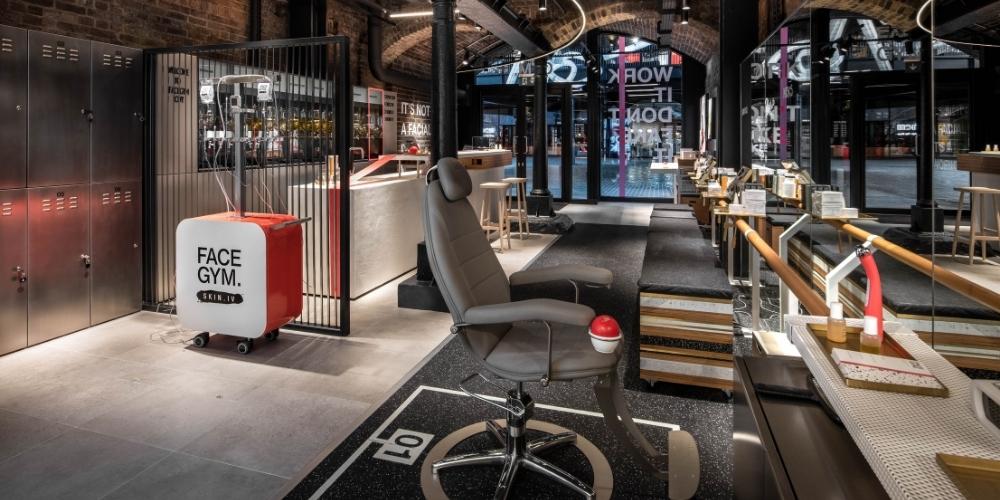
A FaceGym Studio is coming to MECCA in George Street, Sydney in January.
The best at-home approaches
With the focus on skin health and appearance, it’s not surprising facial ‘fitness’ has also become a trending topic, particularly since the beginning of the pandemic. FaceGym, a chain of skin clinics with locations in London, Manchester, New York and Los Angeles, leads the way with face ‘workout’ treatments that involve knuckling, pinching, and whipping strokes to work out your facial muscles.
When the pandemic hit, the brand took its approach online, with live classes to teach fans how to carry out the treatments themselves.
Now, anyone worldwide can log on to workouts like ‘Lip Pump & Plump’ promising to ‘iron out nasolabial folds and lines around the lip area to plump, lift and improve muscle tone’; ‘Brow and Eye Lift’ to ‘reduce puffiness, soften fine lines and release muscle tension’; or ‘Power Lift’, a ‘full face lift focusing on the neck, jaw, cheeks and eyes to elevate all the face contours’. The 30-minute classes are done using your hands and the help of small tools like a tennis ball-sized ‘yoga ball’ or flat ‘contouring tool’ for your face and face oil for glide.
FaceGym has also just announced it is opening one of its studios within MECCA’s flagship store on George Street in Sydney in January 2023 and launching the brand’s products and skin tools at MECCA online in Australia and New Zealand.
Of course, you don’t have to pay to learn similar techniques. The use of facial rollers, or gua sha have become popular tools to carry out DIY facial manipulation and massage at home.
Gua sha is a traditional Eastern and South-East Asian technique in which a smooth, flat credit card-size stone tool is pressed or firmly stroked along the skin of the face, hugging the facial contours. The idea is that the pressure releases facial and muscular tension and moves lymph fluid and disperses blood. In Chinese medicine it is believed to also help move energy flow or qi and was once used to treat heat stroke and illnesses.
For facial rejuvenation, experts suggest applying a silky face serum or oil and using the gua sha to apply even strokes against your skin, preferably in the direction of lymphatic flow, or outwards and upwards.
Other tools are also becoming popular, like face sculptors that contain two round roller balls that roll along cheekbones and temples and create a deep-kneading action. While she’s a fan of these tools, Scott says that they’re not essential to achieve benefits.
“Simply massaging the skin to stimulate blood flow is something you should be doing at home every day, she says. “It doesn’t need to be anything fancy, but spending a couple of minutes each day to really massage your moisturiser or oil into the skin will make a big difference in the clarity and tone of the skin.”
Much of the evidence for facial massage, rolling and face ‘yoga’ remains anecdotal, however small studies suggest potential benefits. A 2018 Northwestern Medicine study showed a 30-minute daily or alternate-day facial exercise program over 20 weeks improved the facial appearance of middle-aged women, resulting in a younger appearance with fuller upper and lower cheeks.
Meanwhile, one study from South Korea concluded that the use of a facial exercise device twice a day for eight weeks increased facial muscle thickness, contributing to facial rejuvenation and a small reduction in the appearance of wrinkles.


